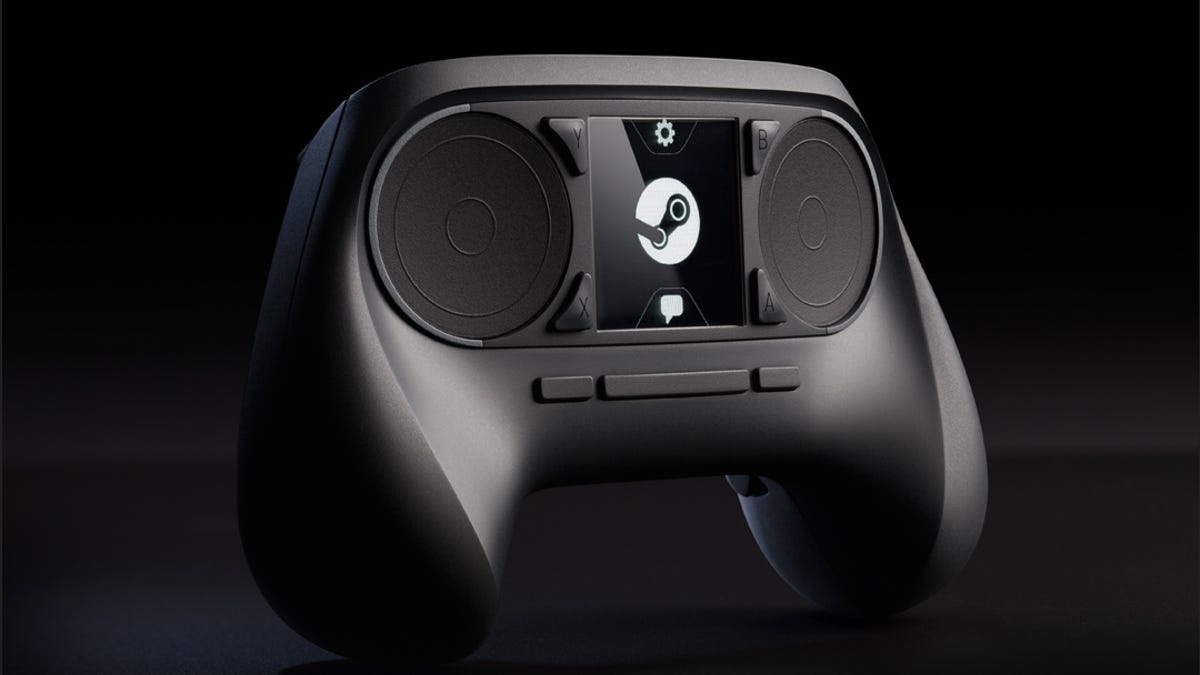Goodbye thumbsticks: Valve unveils Steam Controller with PC-like trackpads
Valve reveals its very own controller -- with two circular trackpads -- joining the company's new operating system and custom hardware prototypes announced earlier this week.

Valve on Friday rounded out its vision for PC gaming in the living room with the Steam Controller. It's a specially designed wireless device with dual trackpads that are meant to translate the feel of a mouse and keyboard to a handheld controller geared toward big-screen playing.
"We realized early on that our goals required a new kind of input technology -- one that could bridge the gap from the desk to the living room without compromises. So we spent a year experimenting with new approaches to input," Valve said in a statement on its Web site. The device was designed using a new generation of haptic feedback, the technology that allows for motion input and vibration in standard controllers.
That means, according to Valve, that its controllers will provide a wider range of more precise vibration and force through which game developers can deliver new modes of information to players "about speed, boundaries, thresholds, textures, action confirmations, or any other events about which game designers want players to be aware."
"It is a higher-bandwidth haptic information channel than exists in any other consumer product that we know of. As a parlor trick they can even play audio waveforms and function as speakers," Valve added.
While it was anticipated that the Half Life creator would unveil the device as the information was buried in its Steam Machine beta test agreement form, Valve's unique design remained a secret. Coupled with the announcement of the Linux-based SteamOS on Monday and Valve's hardware beta test Wednesday, the company has made an especially aggressive push to establish its bid for the living room.
"Steam gamers, who are used to the input associated with PCs, will appreciate that the Steam Controller's resolution approaches that of a desktop mouse," the company goes on to claim. The two high-resolution trackpads are clickable, allowing the entire surface to act as a button. "Games like first-person shooters that are designed around precise aiming within a large visual field now benefit from the trackpads' high resolution and absolute position control," it adds.
The controller, like the Steam Machine prototypes and eventual final products, is completely hackable, said Valve. It also contains a large touch screen in the center equipped with a high-resolution display that can show everything from a scrolling menu to secondary screen info like game maps.
In addition to also being entirely clickable for further input control, the screen -- when touched -- will overlay its display on top of the game you're playing. Beta testers of Valve's Steam Machines will get a controller nearly identical to the one unveiled today, but lacking wireless connectivity and with buttons in place of the touch screen.
Valve's beta test of its Steam Machine prototypes will involve 300 users who will get their hands on machines later this year. The company is currently working with an undisclosed number of hardware partners on finalized Steam consoles set to come to market some time in 2014, though it's unclear whether Valve will market its very own console or is simply using custom hardware for the testing phase.
Update at 10:51 a.m. PT: Added additional details and clarified device's implementation of haptic feedback.

